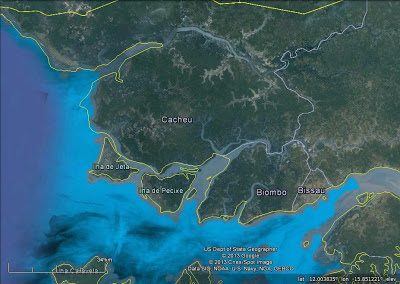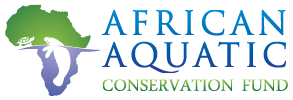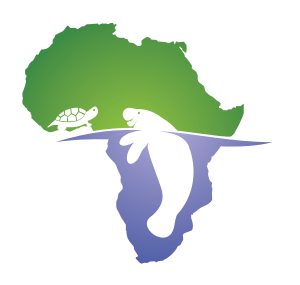On Friday morning I flew from Dakar to Bissau, which was a short 40 minute flight, but as usual in Africa the process at the airport beforehand took several hours, most of which I spent with my fellow passengers standing on the bus that eventually transported us from the terminal to the plane. They loaded us onto the bus and then left us there for an hour while the airport staff loaded the plane. In classic Africa fashion, some passengers got annoyed with the delay and disembarked the bus to wander around the tarmac, yell at the driver, and head back into the terminal to buy food. Most of the passengers were a Christian group returning to Guinea-Bissau from a pilgrimage to Jerusalem, so when we finally boarded the plane they began to sing hymns and chant “Obrigado Deus” (Thank You God) accompanied by clapping for the entire flight.
As I looked out the window, it was easy to see why Guinea-Bissau seems to be a manatee paradise: the entire coastline is a series of wide rivers and mangrove channels, apparently sparsely populated by humans. As we got closer to Bissau many rice fields were evident, and previous reports tell of manatees raiding flooded rice fields at night, which obviously does not endear them to the farmers (this is also a big problem in Sierra Leone).
A close-up of the mangrove canals in northern Guinea-Bissau

When I arrived in Bissau I discovered that although my equipment was there, the bag with my clothes had not made it from Dakar. Apparently about half the baggage wasn’t loaded onto the plane, and we were told it would come on Sunday night (I’m not sure whether or not to believe the airlines, but I have no choice but to wait and see). Fortunately I had a few extra t-shirts in the bag with my equipment and I was able to buy a few toiletries at a shop.
I was met at the airport by Tome, the local CBD-Habitat employee, and Aissa, who works for IBAP, the Guinea-Bissau equivalent of USFWS. They drove me to the IBAP office and introduced me all around- IUCN has offices there as well as several other collaborating organizations. Both Tome and Aissa will be part of the manatee capture team and are very enthusiastic. After IBAP they brought me to a very pleasant hotel where I settled in for the weekend. The rest of the Spanish team from CBD-Habitat arrives on Monday, so I have time to catch up on other work and visit with my friend Betania, who I worked with in Angola a few years ago and who is now working here with IBAP’s sea turtle program. Since Betania’s work is focused in the Bijagos Archipelago, where we’re headed to try to capture manatees, she was able to tell me a lot about the habitat and the realities of working out there.
Bissau is a small city, and actually it feels rather more like a small town than a national capital. The buildings are mostly colonel era but reasonably well-maintained, and brightly painted in oranges, greens, yellows, and pinks. It’s hot and dusty here now, although the rains are due to start any minute, so the air has a feeling of heavy humidity. From my hotel’s rooftop tiki bar I can see the main Canal do Geba that drains out to the ocean not far from here, and where we’ll boat out to Bijagos.



An interesting little country with a tiny population and the high-level view suggests very little stability, having never had an elected president who has successfully served out a full five-year term. On the ground I'm sure it's business as usual for us regular folks, as much as possible. I've always wanted to visit, but then that is true of so many countries. Instead I'll just enjoy your fascinating perspectives.